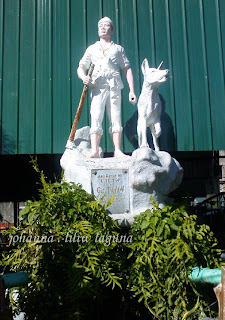 |
| Rice fields (Philippines) |
When the world was still new, the rice plant has no value. It was just a mere grass. It has no grain or fruit. It doesn’t do anything but to kiss the wind all day long.
One day, it happened that the Chinese goddess Kuan-yin went
down to visit the Earth. In her excursion, she saw that everywhere in the four
corners of China are people dying of hunger. Her soft heart cannot endure the
pain and poverty that she sees and it seems as though her heart will melt with
pity. She took a deep breath and said, “Aiya, Ai-ya, I need to act and help
these people.”
She silently observed her surroundings. She took interest in
a worthless rice plant which sprouted in the alley. She approached it and said,
“I will use this humble plant to help my poor people.”
She opened her robe and exposed her white bosom. She
squeezed her right breast with her hand and let out drops of milk of life to
the rice plant’s panicle. She also squeezed her other breast and let the milk
drop on the plant’s empty hulls.
She squeezed her breasts until there’s no milk coming out
anymore. She prayed, “Oh merciful heaven, bless me with a little more drops of
milk.” She massaged and squeezed her breasts again until she saw that some
drops are coming out but it is mixed with blood. The goddess gave all that she
can. She was glad to see that all the panicles became full of rich rice grains.
“Oh noble plant, may your panicle overflow. May we harvest a
lot to eliminate hunger in this land.” After she has done her duty, she happily
came back to the heavens.
| Source: irri.org |
This is how the rice plant yielded its first rice grains.
There are varieties which produce white rice as white as Kuan-yin’s milk, and
there are also some which yields reddish rice as a reminder of the blood mixed
with the last drops of the merciful goddess’ milk.
HOW TO SITE THIS (MLA format):
HOW TO SITE THIS (MLA format):
Sanchez, Geisha, translator. Filipino legends for students. By Rene Alba, Century Publications, 1914, www.feelthephilippines.blogspot.com/2013/10/the-legend-of-rice-ang-alamat-ng-palay. Accessed (day-month-year accessed).





